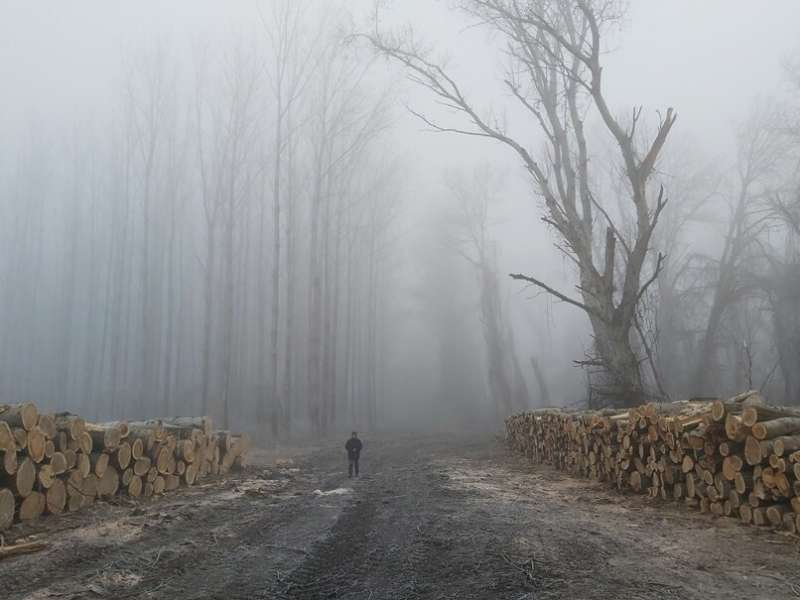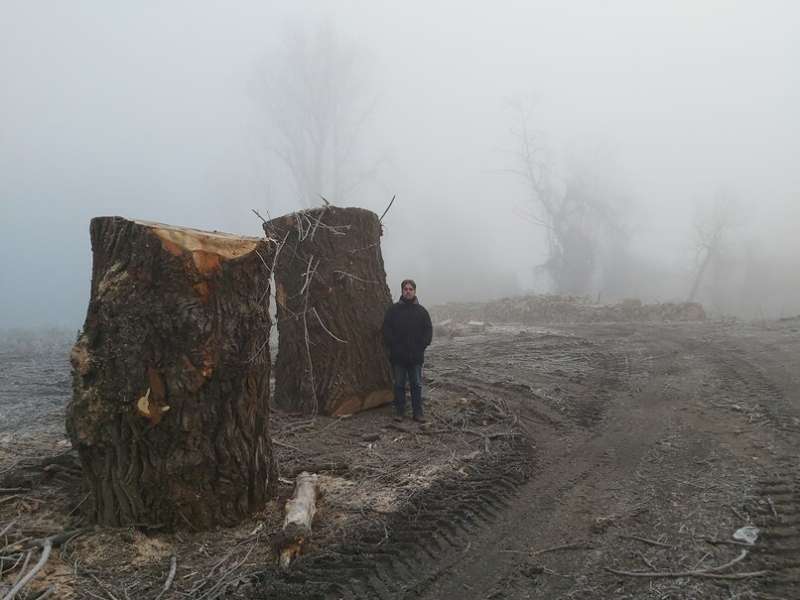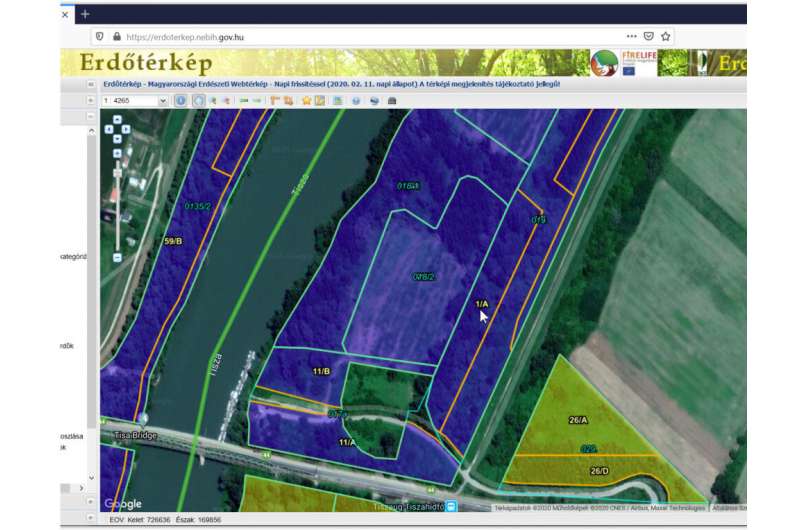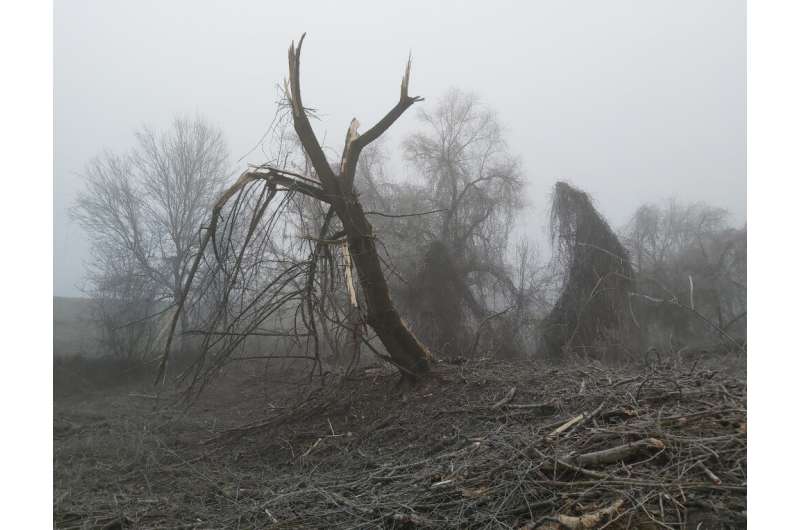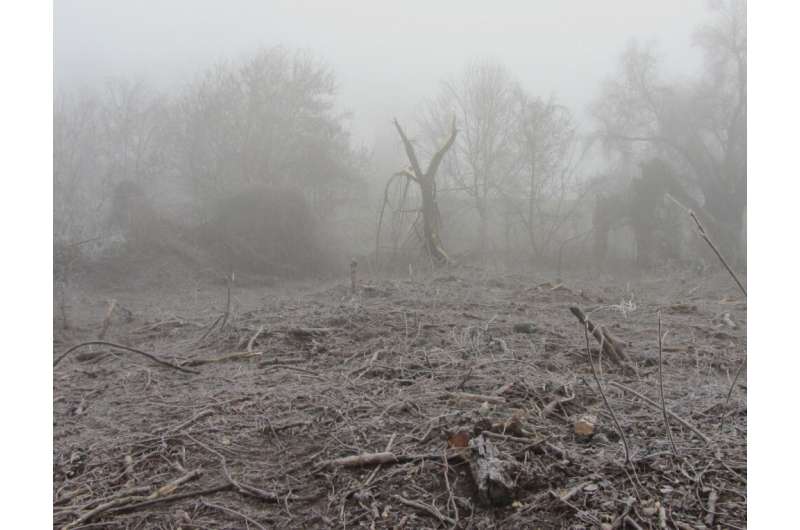The National Directorate of Water Management did not have a permit to clear-cut near the village Tiszaug. Credit: Péter Kajner
An old floodplain forest in Hungary was destroyed by unauthorized clear-cutting in a protected area near the Tisza River.
In Hungary, floodplain forests are among the most endangered forest habitats. Their area has shrunk to less than 1% of their area before river regulation, and old forests are hard to find among them. The National Directorate of Water Management did not have a permit to clear-cut near the village Tiszaug.
The forest, managed by the Hungarian National Directorate of Water Management, was about 90 years old. Irreversible damage has been done to the impacted ecosystem. The illegal cutting of the protected old poplar forest was part of the Government's "VTT River Bank Management in the Middle Tisza" river bank design concept that includes the construction of runoff routes that facilitate quick drainage of flood water. The decimation of the forest has also had a negative impact on valuable wildlife and their habitats, including the protected black stork.
The old floodplain forest, rare in Hungary and across the Tisza River Basin is gone. The former wilderness now resembles the Desolation of Mordor.
Credit: László Gálhidy
Unsustainable flood management
WWF-Hungary previously opposed the river bank management concept, which prefers creating runoff pathways over other, more nature-friendly solutions. In 2017, the organization also raised its voice against the amendment of the Hungarian Forest Act, which allowed drastic interventions in protected forests for flood protection purposes.
"The clear-cutting in January 2020 draws attention to the fact that current practices for flood risk management include methods that are damaging to nature," said Péter Kajner, expert of WWF-Hungary's Living Rivers Programme. The management of Hungarian river banks is carried out without having a detailed legal framework in effect for such actions. A large part of Hungarian floodplain forests and wetlands have been confined to river banks, that is to say between riverside embankments. The former large floodplains were transformed mainly into agricultural areas. Many enjoy hiking along the banks, most of which are also protected areas and part of the Natura 2000 network or protected by national legislation, with valuable wildlife. On the other hand, the water resources management sector typically sees vegetation as a barrier to flooding. For this reason, it seems inevitable that flood control will conflict with other aspects such as nature conservation or water retention,"—says Kajner.
WWF-Hungary urges the identification of those responsible for the clear-cutting and the imposition of a statutory penalty. In many river sections, reducing the flood risk by cutting trees is not necessarily done to protect human life and settlements, but to protect poor-quality agricultural land. The Tiszaug Forest is the victim of unsustainable flood management practices.
The clear-cut area is indicated by 1A on the map. Credit: Google
"This situation can only be resolved if we give the rivers more space. We have to seek solutions outside the river banks, and give more space to rivers and water in a controlled way. This is also needed for adapting to climate change, which threatens our country by more frequent and intense droughts,"—summarized Kajner.
It is regrettable that, while various tree planting movements are gaining attention throughout Hungary, the protection of the country's natural, high conservation value forests, which are of major ecological and climate protection importance, is still not taken seriously.
Critical moves must be made within the next two years
A New Deal for Nature and People is urgently needed. We have received warning after warning highlighting a crisis of accelerating nature loss. Science has never been clearer on the impact of human activities on nature and the consequences we will be facing. This is why all of us, local communities, business leaders, civil society organizations, the financial sector, governments and Heads of State must pledge to achieve:
- ZERO loss of natural habitats;
- HALVE the ecological footprint of production and consumption; and
- ZERO human-induced extinction by 2030.
We call on the European Commission, in consultation with Member States, Western Balkan and European Neighbourhood countries, to develop an ambitious forest ecosystem restoration plan by 2021, and to allocate adequate resources for its complete implementation by 2030. Efforts should aim to enhance forest resilience to climate change; a move which would also represent an integral element in boosting the EU's efforts to achieve its climate ambitions. Simultaneously, actions should also be taken to restore the EU´s priority forest habitats and increase the capacity of forests to sequester and store carbon. This can be achieved by promoting the natural regeneration of forests involving a diversity of native European tree species best adapted to the current and future climate of the region. Therefore, we call for the ecological reconstruction of 10% of all forests in the CEE Region (2.4 mil. ha.) and for the afforestation of an additional 2.4 million hectares of degraded land in CEE using native species and local provenances.
-
The old floodplain forest, rare in Hungary and across the Tisza River Basin is gone. Credit: László Gálhidy
-
Often, reducing the flood risk by cutting trees is not necessarily done to protect human life and settlements, but to protect poor-quality agricultural land. Credit: Péter Kajner
To facilitate the implementation of this restoration plan, we urge CEE governments to support the participatory development of a New Forest Vision that includes a new set of forest management and forest governance principles taking the social, environmental and economic realities in each country into consideration, as well as regional and global challenges related to the climate and biodiversity. A central element of this New Forest Vision should be a network of ecosystems covering 10% of the region's forests in which all forms of commercial timber-harvesting is excluded. This vision must be in place by 2022, and subsequently lead to strategies and actions that can be implemented by 2030.
Provided by WWF
